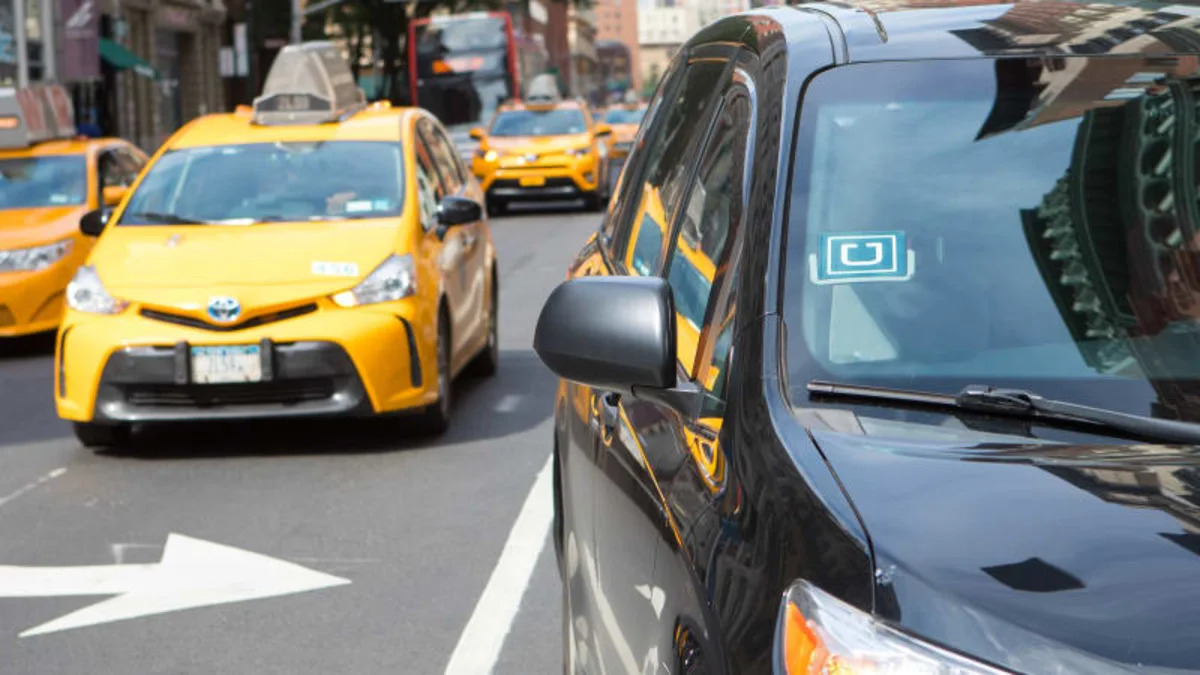Travelers are increasingly hailing rides via their smartphones, rather than raising their arms for a taxi ride. For the first time since aggregator Certify began publishing its SpendSmart Report, Uber in the second quarter of 2019 was the most expensed vendor overall by business travelers, with 12.71 percent of the total. Taken together, ride-hailing leaders Uber and Lyft (which was third on the survey with 3.75 percent) came out as just over 16 percent of the total — the most ever in Certify surveys.
Considering how many cups of Starbucks coffee get expensed every day, it is a significant finding. Starbucks was in second place, with 4.01 percent of total expenses, but it was down nearly one percent compared to the second quarter of 2018. Uber was up 4.13 percent and Lyft 2.63 in the same time period.
“We continue to see Uber, Lyft and ridesharing growing in popularity and taking market share from taxis in every market in the country,” Certify CEO Bob Neveu told Autoblog. “There’s three reasons for that: convenience — you can see when the car is arriving on your phone, quality of service, and cost — it’s cheaper.”
Neveu said that he considers taxis fine for “trips of a few blocks,” but if he’s going to the airport “I’d rather not spend an hour in the back seat of a yellow cab. It’s not a high-quality experience, facing that plastic shield.” The New York Taxi Workers Alliance did not return calls asking for comment.
Scooters are also becoming a factor. “Two quarters ago we started seeing them turn up, and now we’re seeing it more and more,” Neveu said. “Some business travelers are jumping on them for the last 10 to 20 blocks, what we call the last mile.” The top scooter startups in Certify’s results are Lime and Bird.
“As someone who travels for business fairly frequently, I can’t say I’m surprised that Uber and Lyft are so far up the list,” said Sam Abuelsamid, principal analyst at Navigant Research. “In recent years I’ve only rented a car once. I generally use Lyft to get around, and most of my colleagues do the same.”
Rental companies feel the squeeze, too
Car rental companies don’t appear in the top 10 vendor list. “Given the hassle and cost of parking in big cities, which is where business travelers are often going, ride hailing is often a better alternative than a rental,” said Abuelsamid. “In San Francisco you can pay $40 to $60 a day for parking and I think it can be even more in New York City. I suspect that if you look back five to 10 years, car rentals and cabs would have topped that list. We already know the taxi business has suffered greatly from the popularity of ride-hailing and I suspect the rental business has seen a similar downturn.”
Uber, despite all its problems, retains a commanding lead in the hailing field, with 72.8 percent of all rides that get expensed. Lyft was Avis to Uber’s Hertz, trying harder and achieving 21.57 percent of all expensed rides. Taxis, formerly the dominant player, got just 5.63 percent of the transactions.
One factor here is that taxis are, for the most part, more expensive than ridesharing. The average cost of a taxi ride was a whopping $36.17 in the second quarter, compared to $25.37 for Uber and $25.51 for Lyft. Business travelers want to look good for the boss. And that’s one reason that the top expensed restaurants were budget-conscious McDonald’s (number one for lunch and dinner, Chick-fil-A, and the aforementioned Starbucks.
Certify’s Top 10 list for business expenses also includes (in addition to the aforementioned Starbucks), Amazon, Walmart, Shell, and four airlines — American, United, Delta, and Southwest. Aside from the ride-hailing companies, Amazon was the only one to gain market share, up a modest 0.28 percent.
Uber and Lyft also got higher customer ratings in the Certify survey, 4.6 (out of five) and 4.4 respectively, with taxis getting just a 4. The average taxi is a high-mileage road warrior, compared to the driver-owned vehicles flying the hailing company flag.
Corporate traveler Colleen Casey, an engagement consultant at BlessingWhite, told Autoblog that company accountants might not care whether employees hail taxis or Uber/Lyft, especially when the customer is footing the bill. “Their main concern is staying within budget,” she said. “In my personal life, I tend to take Ubers because the price difference can be significant, and taxis can be decrepit and gross. But taxis sometimes have an advantage for me because I think there’s more vetting of the drivers, and they tend to know where they’re going. Also, in locations like New York City, it seems silly to hail an Uber when there are 27 taxis whizzing by.”


Sign in to post
Please sign in to leave a comment.
Continue